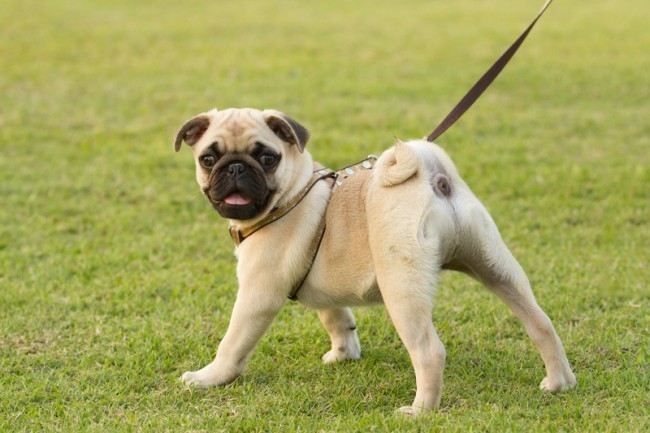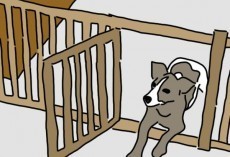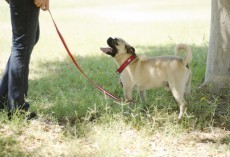As of now, there are three key areas of your dog’s body to watch in regards to communication: his tail, his ears, and his face. There may be more but these are the ones we know about:
The Tell-Tale Tail. A wagging tail is widely assumed to be a sign of a happy pup. In reality, a wagging tail most often signals a willingness to interact — but the engagement may not be friendly. In some situations, a wagging tail may be the canine version of a friendly wave, while at other times, it may signal an overly aroused dog about to react.
So how do you know if your dog’s wag is friendly or frightened? A happy tail wag tends to have a wide, sweeping motion, sometimes with loose circling movements of the tail. Your dog will hold his tail at a comfortable height, more or less even with his back. He may hold his tail slightly higher when he is interested in something, like a treat or toy you are holding in your hand.Face Value. A happy, relaxed dog’s eyes may look slightly squinty or they may be rounded and relaxed. When he is relaxed, your dog’s mouth may be loosely closed or slightly open. It may look as though he’s smiling.
When your dog is anxious, he may show the whites of his eyes. He may furrow his brow and blink frequently. He may also stare intently or look up out of the corner of his eye, or his gaze may dart around. His pupils may be dilated and dark.
My, What Expressive Ears You Have. A relaxed dog typically holds his ears forward and slightly to the side. His ears may twitch when he is listening to interesting sounds. When he is interested in something, his ears will usually be forward-facing and erect. He may lower his ears and move them back during certain interactions, like accepting a treat or giving kisses. This is a normal, friendly gesture.
When your dog holds his ears taut and tightly forward, it can be an indication that he is preparing to react to something. He may be getting ready to chase a cat or squirrel — or he may be preparing to lunge at a person or another dog.
Remember, certain behaviors can seem obvious in one context but can actually be an indication of something entirely different!
Example: Panting is a normal behavior for a pooch after they have had a run or were playing. However, panting that is not related to heat or physical movements can be stress-related!
There are more doggy body language details to understand and if you would like to read more, please go to Vet Street. Our pets are our pride and joy. Let’s show them appreciation by understanding their behavior.











Bob Flock
- Edit
Kiss my$#%&!@* Lol
Pamela Davis
- Edit
Shake what your moma gave you